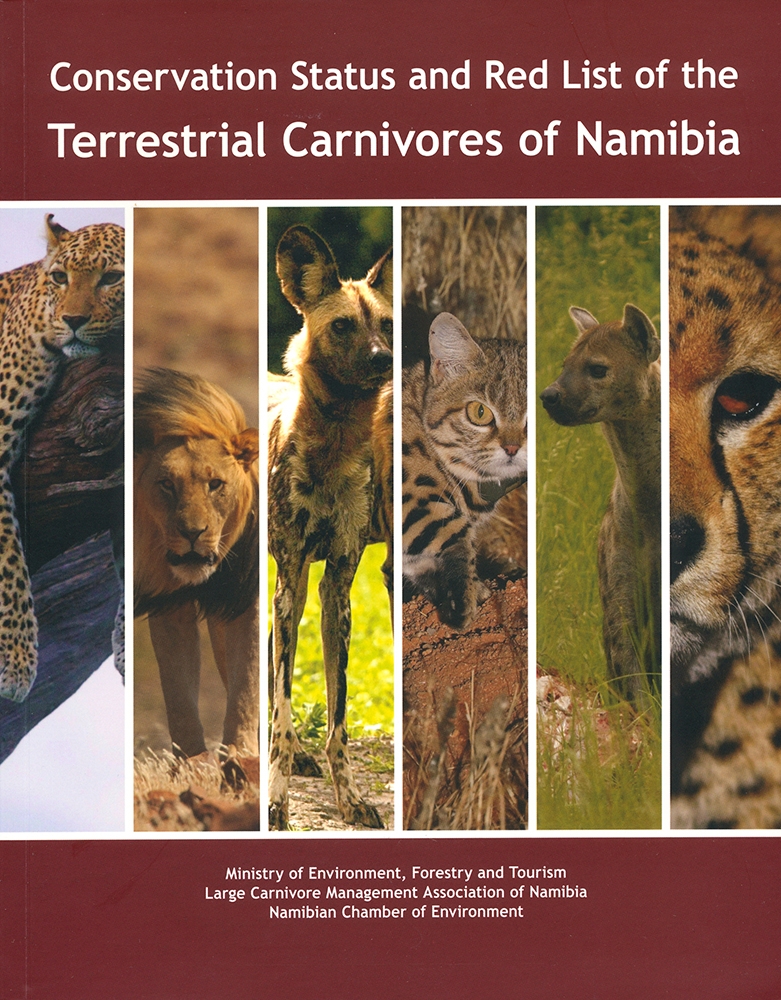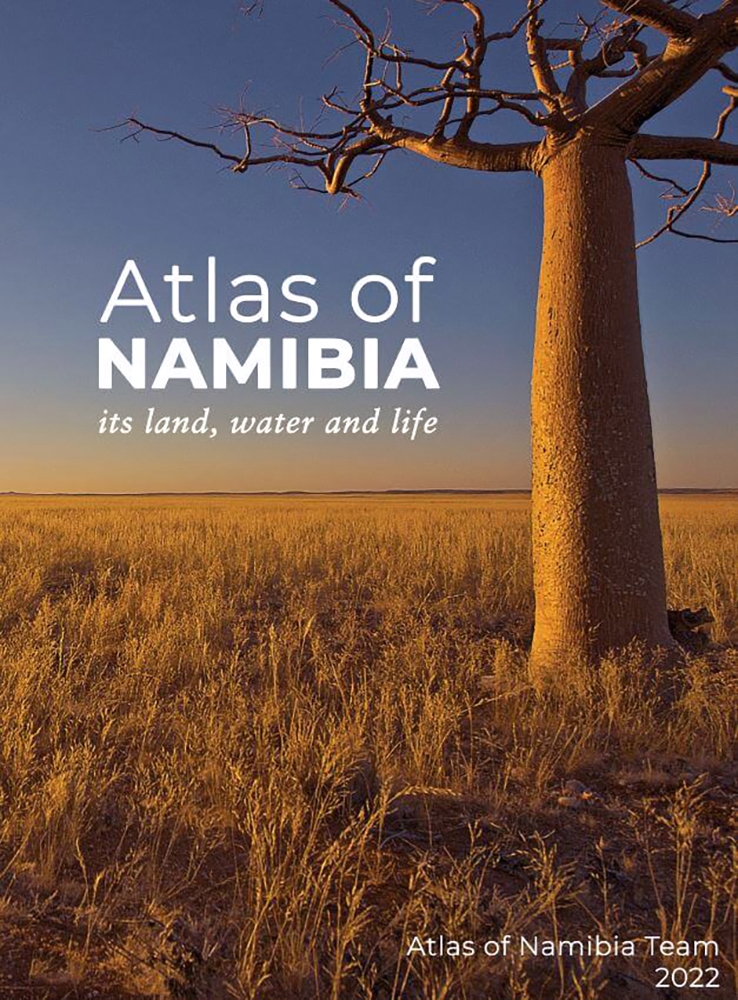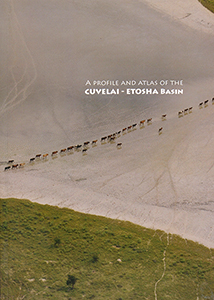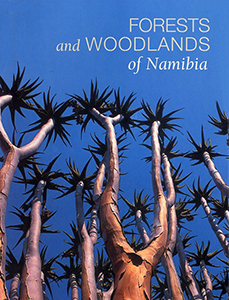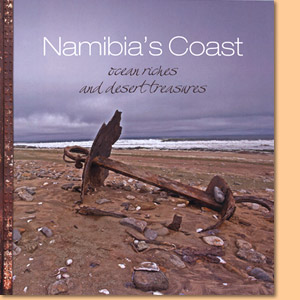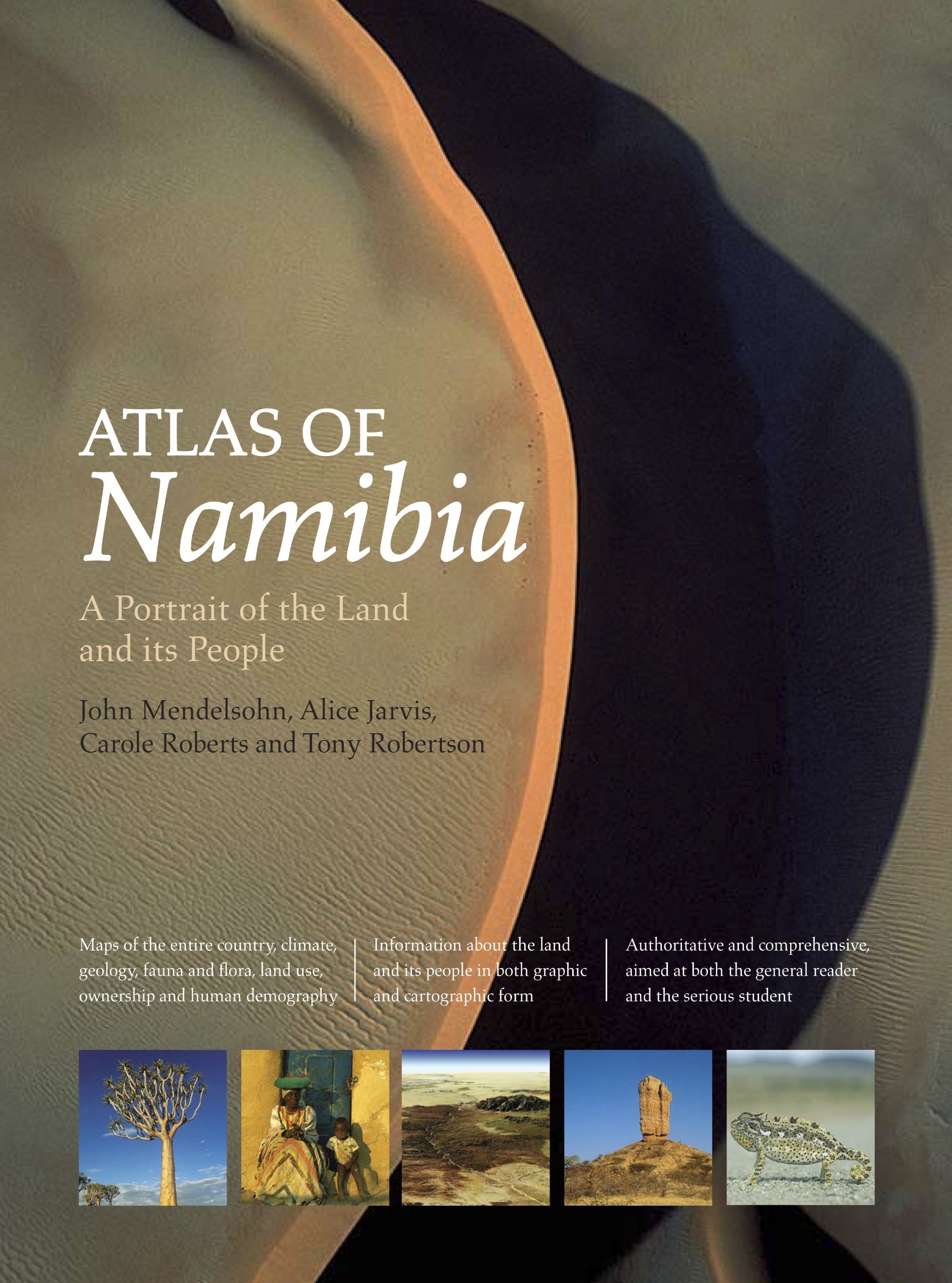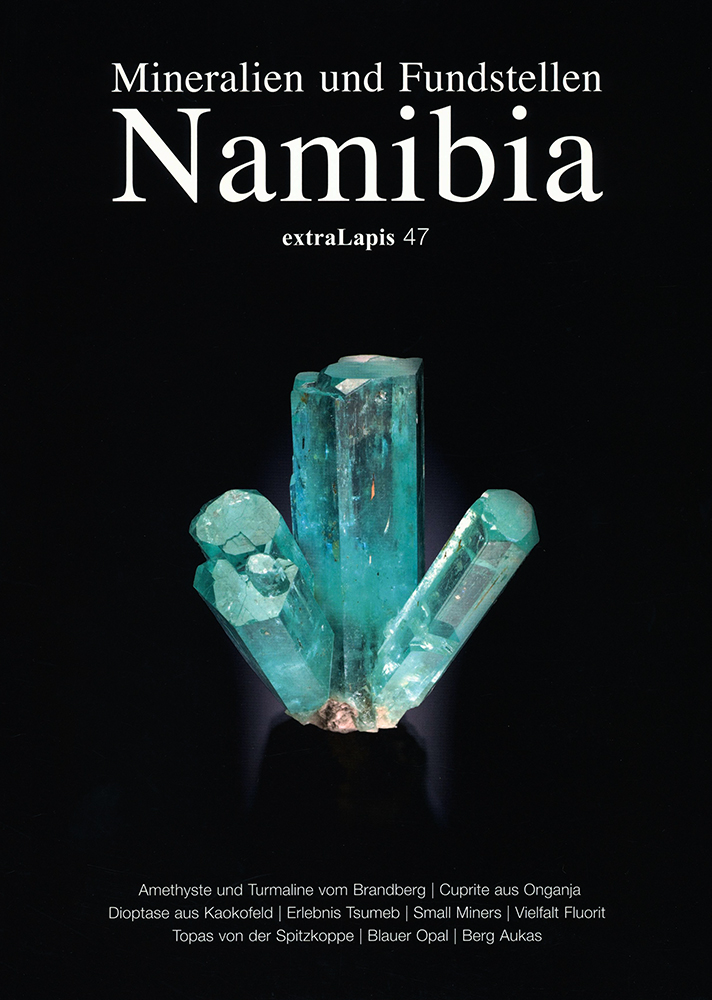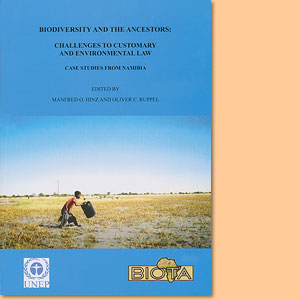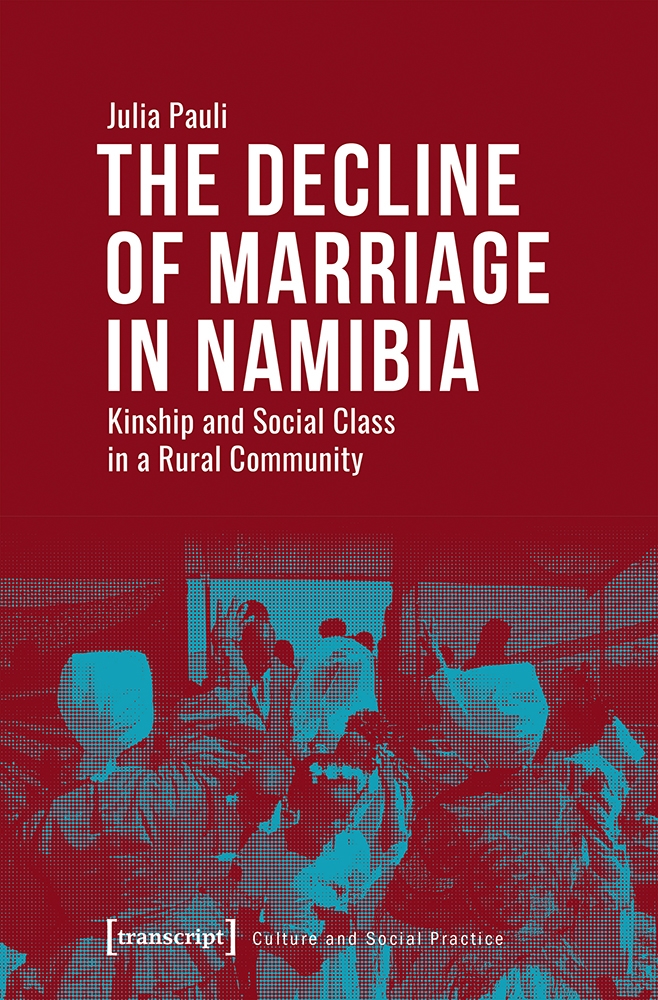Atlas of Namibia. A portrait of the land and its people, by John Mendelsohn
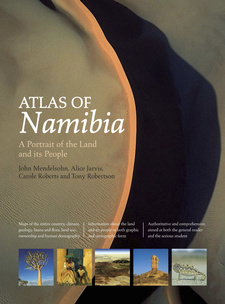
Atlas of Namibia. A portrait of the land and its people, by John Mendelsohn et al. Sunbird Publishers. Reprint of 3rd edition, Cape Town, South Africa 2010. ISBN 9781920289164 / ISBN 978-1-920289-16-4
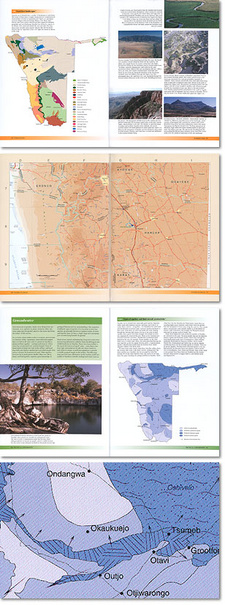
Example from Atlas of Namibia. A portrait of the land and its people.
Namibia has many features to be admired and appreciated: spectacular scenery, abundant wildlife, people diverse in culture and outlook, a sunny climate, and other wonderful qualities. While it is easy to appreciate beautiful landscapes, for example, the degree to which we cherish these and other features often depends on our knowledge and understanding of them. The simple aim of Atlas of Namibia is to provide information to improve that knowledge and to foster an appreciation of all that makes Namibia the country it is.
John Mendelsohn Tony Robertson Alice Jarvis
The production of the Atlas of Namibia was made possible by the generosity of people who made information available to the Atlas Project, and by the Government of Finland, which kindly provided the funds to compile and publish the work. Every effort was made to use the most recent information available, and most of the maps were compiled from data collected during the past five years. Some maps are based on extremely detailed and accurate data at much higher resolution than can be appreciated from the mapping scales used in this book. Other maps are more approximate, either because the data were more generalised or because they were intended to show only broad trends. Sources of information and additional details are given in the notes at the back of the book. The Atlas of Namibia Project was designed to produce two products. One is this book, and the second is the data that were assembled and processed to produce the printed maps. These data have come from many sources and include some sets that the Atlas of Namibia Project compiled afresh. All the data we have been able to make available for public use can be obtained from the website of the Directorate of Environmental Affairs at. The data have been made publicly available in the hope that they will be widely used, be analysed further, be published in other formats, and contribute to wise decision-making at all levels. We also hope that new and updated information based on these data will, similarly, be made available for public use. The Atlas of Namibia covers a variety of subjects, and we hope that it will be of interest to a broad audience. Many of the topics are clearly connected. For example, present-day land uses are strongly influenced by such varied features as soil qualities, history, climate and underground water supplies. The Atlas draws attention to many of these linkages but others are beyond the scope of this book. One aspect that is important, however, is that a considerable number of the linkages between different topics may be expressed in terms of supply and demand. This provides an underlying approach for the book in that the early chapters focus on the supply of resources while the later ones are concerned more with aspects of demand.
The Atlas of Namibia comprises six chapters:
Chapter 1 introduces the country and provides information that is useful for orientating oneself in Namibia.
Chapter 2 describes the country's physical resources, especially those that provide the foundation of soils, water, minerals and geological resources.
Chapter 3 is concerned with climate and deals with such issues as variation in rainfall, how evaporation rates change across the country, and what factors make the coastal environment so different. Features covered in these first three chapters strongly affect all the aspects covered in the remaining chapters.
Chapter 4 deals with the distribution and abundance of plants and animals in terms of diversity and resources, and highlights areas where Namibia has a special responsibility for the conservation of these resources.
Chapter 5 is concerned with land and its uses, including how land occupation has changed over the past 125 years, how land is now controlled, and how farming activities differ from place to place.
Chapter 6 is about the people of Namibia, focusing on such features as the distribution, growth and structure of the population, as well as household economies and social services. We hope that the contents of the pages ahead will provide an informative perspective on Namibia. […]
This is an extract from the book: Atlas of Namibia. A portrait of the land and its people, by John Mendelsohn.
Book title: Atlas of Namibia. A portrait of the land and its people
Authors: John Mendelsohn; Alice Jarvis; Carole Roberts; Tony Robertson
Publisher: Sunbird Publishers
Reprint of 3rd edition, Cape Town, South Africa 2010
ISBN 9781920289164 / ISBN 978-1-920289-16-4
Hardcover, 24x33 cm, 220 pages, 200 colour photographs and maps, English text
Mendelsohn, John und Jarvis, Alice und Roberts, Carole und Robertson, Tony im Namibiana-Buchangebot
Conservation Status and Red List of the terrestial Carnivores of Namibia
Conservation Status and Red List of the terrestial Carnivores of Namibia: the Namibian Carnivore Red Data Book.
Atlas of Namibia
This is the third edition of the geographical profile and Atlas of Namibia since 1983. Don't miss your copy.
A profile and atlas of the Cuvelai-Etosha basin
This atlas describes the main features of the Namibian part of the basin and provides an overview of the entire profile Owambo or Cuvelai-Etosha Basin.
Forests and woodlands of Namibia
Photographic study of Namibia's forests and woodlands, with extensive information on distribution and commercial uses of each species.
Namibia’s Coast: Ocean riches and desert treasure
Namibia’s Coast: Ocean riches and desert treasure introduces the coast of Namibia in seven environmental chapters.
Okavango Delta. Floods of Life
'Okavango Delta: Floods of Life' describes the origins, functioning, life and people of this remarkable wetland in Botswana.
Atlas of Namibia
This authoritative Atlas of Namibia contains a wealth of information about the land and its people rendered in both graphic and cartographic portrait.
Weitere Buchempfehlungen
extraLapis 47: Namibia. Mineralien und Fundstellen
extraLapis 47: Namibia. Mineralien und Fundstellen zeigt die große Vielfalt und Schönheit der Mineralien aus Namibia.
Biodiversity and the Ancestors. Challenges to Customary and environmental law case studies from Namibia
Spans an arc between legislative efforts on regional, national and local levels and traditional ways of maintaining the environment in Namibia
The Decline of Marriage in Namibia
The Decline of Marriage in Namibia: Kinship and Social Class in a Rural Community.

